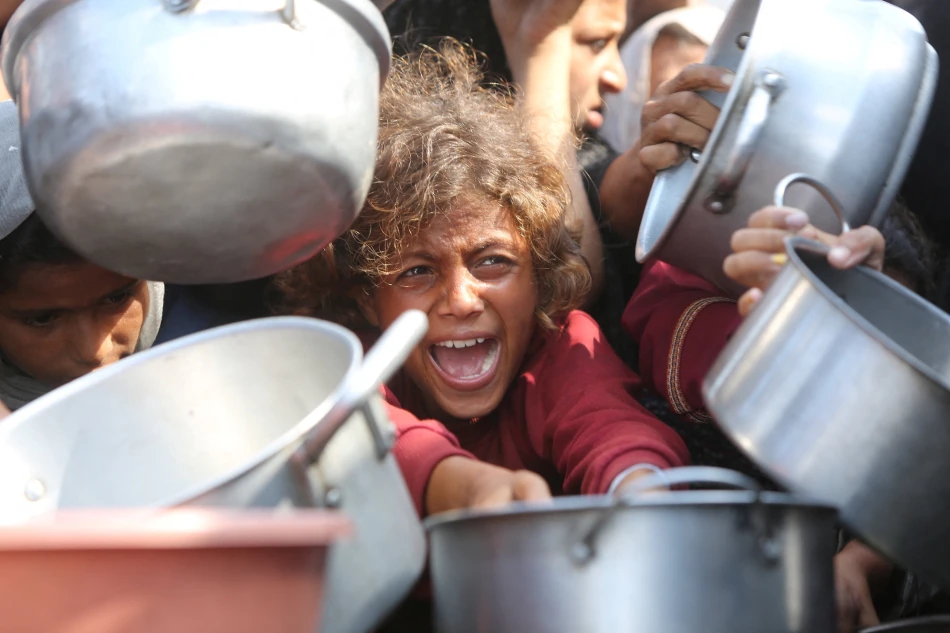
Gaza Faces Looming Famine: UN Issues Unprecedented Food Crisis Alert in the Middle East
UN Declares Famine in Gaza as Half a Million Face "Catastrophic" Conditions
The United Nations has officially declared famine in Gaza, marking the first such declaration in the Middle East and signaling a humanitarian crisis of unprecedented scale in the region. With over 500,000 people now facing "catastrophic" food insecurity, UN officials directly blame Israeli restrictions on aid delivery for creating what they call a "preventable famine" that should "keep us all awake at night."
Historic Declaration Exposes Deepening Crisis
Tom Fletcher, UN Under-Secretary-General for Humanitarian Affairs, delivered the stark assessment on Friday, emphasizing that this famine "could have been avoided if we had been able to do so." His words carry particular weight as this represents the first official famine declaration in the Middle East, setting a grim precedent for a region already struggling with multiple humanitarian challenges.
The declaration comes after months of warnings from international observers about deteriorating conditions in the Palestinian territory. Fletcher pointed to systematic obstruction by Israel, stating that "food aid is piling up at the borders due to systematic obstruction practiced by Israel."
Israeli Response and Disputed Narratives
Israel immediately rejected the UN declaration, with its foreign ministry denouncing what it called bias based on "Hamas lies" and asserting that "there is no famine in Gaza." This sharp disagreement highlights the increasingly polarized information environment surrounding the conflict, where basic humanitarian facts have become contested political territory.
Scope and Scale of the Crisis
The Rome-based Integrated Food Security Phase Classification (IPC), a UN body that serves as the global standard for famine assessment, confirmed that famine conditions now exist in Gaza Governorate and are expected to spread to Deir al-Balah and Khan Yunis by late September.
The geographic spread tells a devastating story. Gaza Governorate represents approximately 20% of the Palestinian territory's area. When combined with Khan Yunis (29.5%) and Deir al-Balah (16%), the affected regions will encompass 65.5% of Gaza's 365 square kilometers—nearly two-thirds of a territory home to just over two million people.
Technical Criteria Met for Famine Classification
The IPC's famine declaration rests on three critical thresholds, all now met in Gaza: at least 20% of households face acute food shortages, at least 30% of children under five suffer from acute malnutrition, and at least two people per 10,000 die daily from starvation. These metrics, based on data collected through August 15, paint a picture of systematic collapse in basic life support systems.
Current projections suggest the number of people in catastrophic conditions will rise from over 500,000 to approximately 641,000 by the end of September, representing what the IPC calls the worst deterioration since assessments began in Gaza.
Military Operations and Aid Restrictions
The famine declaration directly links current conditions to escalated military operations in recent months, which have caused massive displacement while simultaneously restricting access to food assistance. This combination has created what humanitarian experts describe as a "perfect storm" of factors driving the crisis.
The timeline of aid restrictions reveals a systematic tightening of access. In early March, Israel imposed a complete ban on aid entering Gaza. Limited supplies were permitted starting in late May, but in quantities far below humanitarian needs, creating severe shortages of food, medicine, and fuel.
Competing Claims Over Aid Distribution
Israel, which controls all of Gaza's entry points, accuses Hamas of stealing aid supplies—charges the militant group denies. Israeli officials also claim humanitarian organizations fail to distribute aid effectively, while these same organizations argue that excessive Israeli restrictions make distribution extremely dangerous under war conditions.
This dispute over aid distribution reflects broader challenges in conflict zones where humanitarian access becomes a tool of war. Similar patterns have emerged in Syria, Yemen, and other prolonged conflicts, where controlling food access becomes a strategic weapon.
Historical Context and Regional Implications
This famine declaration carries significance beyond Gaza's borders. The Middle East, despite its wealth disparities, has largely avoided the systematic famines that have plagued parts of Africa and Asia in recent decades. The UN's declaration suggests that modern conflict can rapidly create famine conditions even in relatively developed areas with established infrastructure.
The human toll provides context for the scale of destruction. Hamas's October attack killed 1,219 people, mostly civilians, according to official Israeli data compiled by AFP. Israeli military operations since the war began have resulted in at least 62,192 deaths, predominantly civilians, according to Gaza's Hamas-run Health Ministry.
Implications for International Humanitarian Law
The famine declaration raises serious questions about compliance with international humanitarian law, which requires parties to conflict to facilitate rapid and unimpeded passage of humanitarian relief. The UN's direct attribution of famine conditions to systematic obstruction could influence future legal proceedings and international diplomatic responses.
For the broader international community, Gaza's famine represents a test case for the effectiveness of humanitarian intervention in modern warfare. The failure to prevent famine despite months of warnings may prompt reassessment of international mechanisms designed to protect civilian populations during armed conflict.
As conditions continue deteriorating toward the projected September expansion of famine zones, the international response to this crisis will likely influence humanitarian policy and conflict management strategies for years to come. The precedent being set in Gaza—where famine has been declared preventable yet allowed to occur—may reshape expectations about international responsibility to protect vulnerable populations in future conflicts.
 Sara Khaled
Sara Khaled







